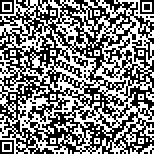下载中心
优秀审稿专家
优秀论文
相关链接
摘要

针对复杂环境下水体提取精度易受到低反射率地表影响的问题,本文以秦淮河流域为实验区,选用2015年10月12日ETM+影像,在水体、低反射率地表和其他地表纯净像元平均反射率基础上构建Multi-Band Water Index (MBWI)。搜集1985年—2016年已有的12种水体指数,选取南京、南宁和烟台地区3景影像中不同地表环境的6个测试点,采用基于K均值聚类的水体指数法提取水体后分析水体指数在复杂环境下的有效性。结果表明,MBWI以平均总体精度、Kappa系数、错分和漏提误差分别为98.62%、0.95、3.46%和3.74%,总体上较其他水体指数具有一定的优势;实验发现TCW(Tasseled Cap Wetness index)不能有效地消除山体阴影,TCW和AWEInsh(Automated Water Extraction Index with no shadow)误将白色高反射率建筑噪声分为水体,水体提取结果中均有低反射率非水体信息存在;水体在可见光而非水体在红外反射率较高,基于二者的差异及从绿到红外波段水体似呈递减现象构建的MBWI能有效的抑制低反射率噪声,对水文水资源的研究与应用具有一定的实际价值。
Surface water includes irreplaceable and nonrenewable resources for terrestrial life. However, the rapid urbanization is causing diverse changes in size, amount, and quality of surface water. Accurately extracting surface water from remote sensing images is important for water environmental conservation and water resource management. This study aims to formulate a Multi-Band Water Index (MBWI) that consistently improves surface water extraction accuracy in the presence of various environmental noises.
A new MBWI is designed to improve the accuracy of surface water extraction by increasing spectral separability between water and non-water surfaces. The method uses the average reflectance of the pure pixel of the seven land cover types, namely, surface water, forest, mountainous shadow, high-reflectance building, low-reflectance building, farmland, and bare soil, obtained from a Landsat 7 image of the Qinhuai River basin acquired on October 12, 2015. In general, the common threshold method is a popular approach to obtaining the results of surface water extraction from remote sensing imagery. However, determining the optimal threshold is an iterative, complicated, and challenging process. The K-means clustering method is applied to automatically extract surface water to avoid the artificial errors in determining the optimum threshold from the MBWI map. Surface water mapping outputs derived from water index methods that are based on K-means cluster are used to analyze the extraction accuracy of water indexes under complicated land cover types.
To validate the availability of MBWI, twelve existing water indexes are collected from 1985 to 2016 as the comparable methods of surface water extraction. Furthermore, six test sites with various impact aspects for extracting surface water, e.g., mountainous shadows, high building shadows, and dark built-up areas that are usually sources of surface water extraction errors, are selected from three images (one Landsat 7 image and two Landsat 8 images) from Nanjing, Nanning, and Yantai. Compared with the existing water indexes, our proposed MBWI yields acceptable surface water mapping outputs. The assessment factors, namely, average overall accuracy (98.62%), Kappa coefficients (0.95), commission errors (3.46%), and omission errors (3.74%), are better than those of the existing surface water extraction methods. Results show that certain water indexes are weak in identifying surface water from land cover types. The Tasseled Cap Wetness (TCW) index is not effective in eliminating mountainous shadows. TCW and Automated Water Extraction Index with no shadow (AWEInsh) inaccurately identify white high-reflectance building noises with surface water. The accuracy of surface water extraction is usually constrained by land cover types that display similar reflectance to surface water. Therefore, low-reflectance non-water surfaces exist more or less in surface water mapping outputs.
The maximum reflectance of surface water is presented in visible light bands, whereas that of the non-water surfaces is in infrared bands. Moreover, surface water reveals similarly decreasing trends from green to infrared bands. A new water index, named MBWI, is formulated according to the band difference of water and non-water surfaces. This difference has important practical significance for water resource studies and applications.

